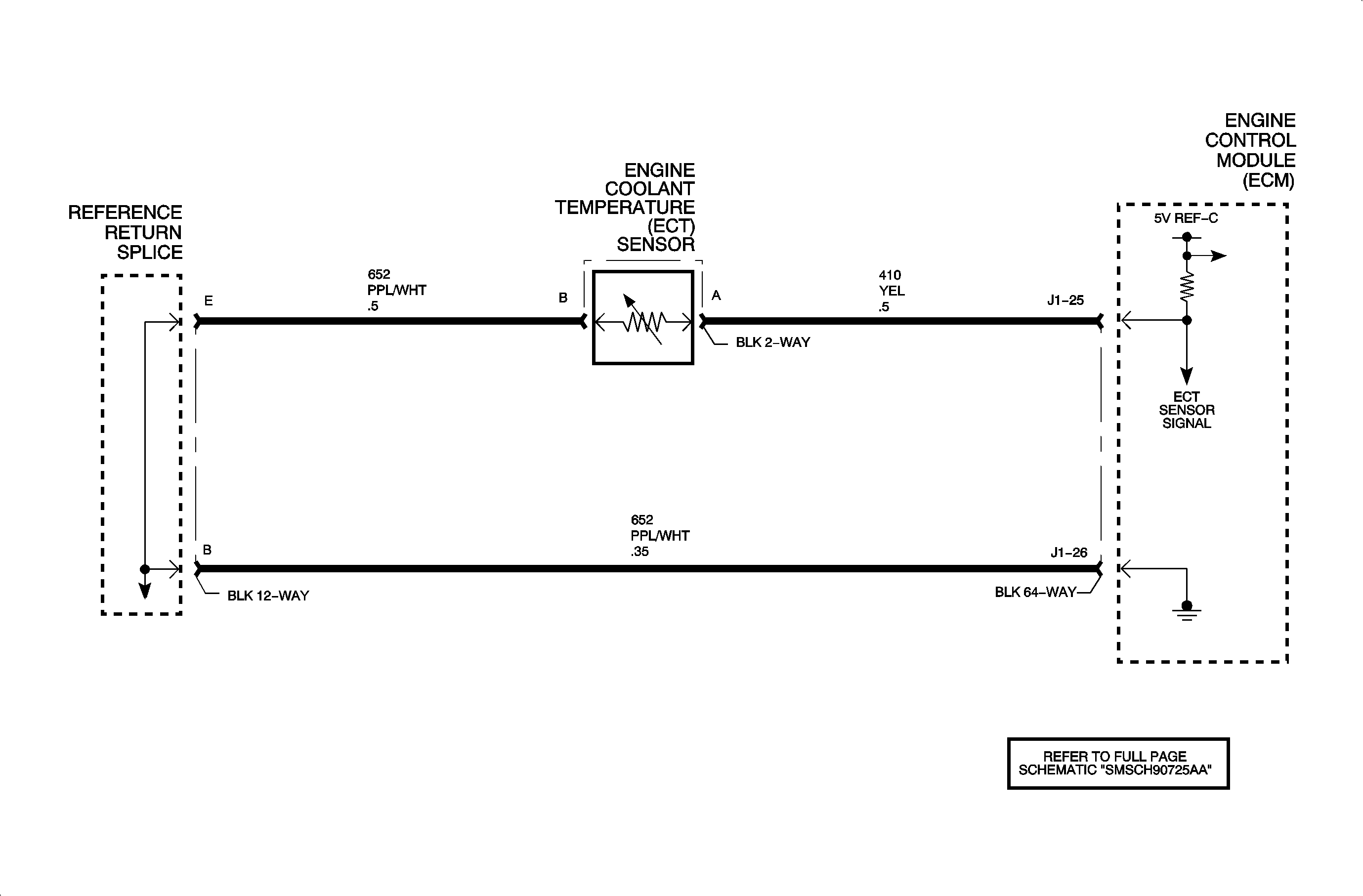
The engine coolant temperature (ECT) sensor is a thermistor that varies resistance according to changes in the engine coolant temperature. The ECM supplies a 5-volt reference through a pull-up resistor to the sensor, which is connected to the ground. When the sensor is cold it has high resistance (high signal voltage at ECM). As the sensor temperature increases, its resistance decreases (lower signal voltage at ECM). The ECM uses the signal voltage to determine the engine coolant temperature. The ECM calculates a modeled temperature using the start up ECT, the MAF, the MAP and engine run time, then compares this value to the ECT sensor signal. DTC P0116 sets when the ECT sensor signal deviates more than 12°C or 22°F from the ECM modeled temperature.
DTC Parameters
DTC P0116 sets when the ECT sensor signal deviates more than 12°C or 22°F from the ECM modeled temperature when engine speed is greater than 20 RPM.
DTC P0116 runs continuously with the engine cranking/running.
P0116 is a type B DTC.
Diagnostic Aids
DTC P0116 indicates that the ECT sensor readings are valid, but deviate more than 12°C or 22°F from the ECM modeled temperature.
Possible causes of out of range engine coolant temperature:
| • | The ECT sensor is skewed. |
| • | The ambient temperatures are very low. |
| • | There is corrosion in the connector or resistance in the wiring. |
| • | There are poor or corroded connections in the ECT circuit. |
| • | The thermostat is malfunctioning. |
| • | The cooling fan(s) is malfunctioning. |
The ECT sensor reading may be compared to the IAT sensor reading on the scan tool after the vehicle has been sitting longer than 6 hours with the ignition Off. Both readings should be within 6°C or 10°F of each other.
Refer to the ECT General Description for the Temperature vs. Resistance chart.
